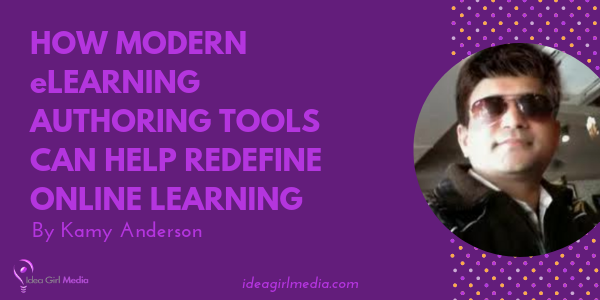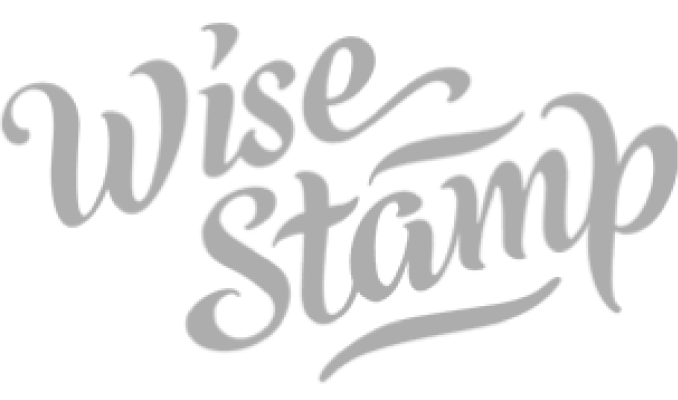If you're reading up on elearning authoring tools, examples of how they work and are benefitting both creators and users might be of help.
If you're reading up on elearning authoring tools, examples of how they work and are benefitting both creators and users might be of help. This article is a good introduction and also includes tips for making choices...
Guest post by Kamy Anderson
The Game-Changing Benefits of Modern-Day eLearning Authoring Tools
eLearning authoring tools have been around for
a while. The first one, called PLATO, was designed and implemented in 1960 by
the U.S. National Science Foundation. But it wasn't until the popularization of
online learning that authoring tools came into the limelight.
eLearning authoring tools designed for the digital age are intuitive, reliable, and innovative. A multitude of:
- Modern-day schools
- Digital academies
- Online course providers
- Knowledge-oriented organizations
Are relying on eLearning authoring tools to help them design engaging lessons, courses, and entire training programs.
In this process, quality is crucial, but so is engagement. Here's how modern eLearning authoring tools can help redefine online learning...
Designing An Experience With Elearning Authoring Tools

A lot has changed since 1960.
We live, work, and think differently than we used to half a century ago, so it's only natural that we learn differently too. Our learning styles have changed and evolved. Consider the amount of available information and the average attention span, which is now much shorter.
To bridge this gap between a surplus of available knowledge and a deficit in the capacity to learn, modern educators have started making knowledge acquisition:
- Extremely intuitive
- Convenient
- Easy
In addition, learning is now
- Fun
- Interactive
- Stimulating
Just what modern-day authoring tools are designed to be.
Their end-goal is to help us create learning environments suitable for modern learners. This environment is similar to popular social media sites - packed with multimedia information, it is fun and easy to use, but also highly:
- Personalized
- Engaging
- Interactive
With authoring tools, we’re not supporting
information design. Instead, we are designing an experience.
Knowledge At A Click
The world's leading search engine answers 63,000 queries per second every day. Not only does Google know answers to all our questions, but it also provides them in a millisecond, anytime, anywhere, and across devices. With voice search, we don't even have to type.
So, why study then? Why should modern-day students memorize answers at all?

Even though we still recognize the everlasting importance of expertise and skills, newer digitally native generations will be asking more and more questions. To beat Google, educators must provide an engaging learning experience that is quite intuitive and accessible.
That's why modern-day learning tools are allowing us to create cloud-based online courses that are available 24/7. And, using different engagement techniques, learners are encouraged to study wherever they are:
- Commuting to school work
- Waiting in line at a bank
- At the park on a beautiful day
Importantly, educators can now update and deliver new information in real time. Additionally, we're even seeing the evolution of cloud based elearning authoring tools.
Smaller, Faster, Better
A combination of microlearning and mLearning is extremely effective when it comes to learning with shortened attention spans. This may be the biggest change supported by modern authoring tools since eLearning itself - the ability to consume knowledge in chunks, wherever we are.
A modern-day eLearning authoring tool is mobile-responsive itself, meaning that course creators can use it for content writing and UX design on-the-go. It comes adjustable to any screen size and aspect ratio of a mobile device, ranging from the largest tablets to the smallest smartphones.
The same capability is available to end-users, boosting both engagement and retention. Thanks to these tools, continual learning is making a huge comeback!
Introducing Multimedia

Finally, here’s something that eLearning courses have that Google does not:
A collection of content formats to support every learner’s learning style and preference.
In addition to text and video, new authoring tools offer advanced multimedia formats such as VR simulations. Learners can hardly get the same experience by browsing the Internet.
A good creation menu includes:
- Audio recorders
- Simulation creators
- Gaming templates
- Graphics library
Modern-day authoring tools feature a wide selection of content formats that appeal to all senses and therefore leave a stronger and longer-lasting impact that improves knowledge retention.
For example, medical students can now enter the human body with a VR set. This adds a whole new dimension to experiential learning!
About Social Learning
With social learning, online courses deliver the final punch to the all-knowing search engines and voice-activated digital assistants like Cortana, Siri, and Google Assistant.
Google may seem to have all the answers, but its ultimate shortcoming is that it is not designed for learning. If it was, it would have included social learning capabilities.
For a long time, the social component was the only thing that traditional education had as an advantage over eLearning. But modern-day authoring tools now come with gamification features that allow course creators to make eLearning more engaging than ever before.
And let’s also mention that authoring tools
encourage collaboration in creating courses as well. The best of them boast
project management features and enable educators and UX designers to work
together on the same course in real time, brainstorming and exchanging ideas.
Real-Time Improvement
Finally, authoring tools support robust reporting.
Their analytical features are aimed at both students and educators, to help course creators gain a better understanding of current learning behaviors and needs, as well as of individual student’s learning preferences and progress. Without that element, there would be no real improvement.
- Monitoring
- Tracking
- Data collecting
- Analyzing
- Reporting
All are crucial for continual learning. If there wasn’t this actionable insight, eLearning authoring tools would be mere design aids. It's this robust reporting that empowers us to identify mistakes and bridge knowledge gaps.
Most importantly, these improvements are possible in real time. As soon as the authoring tool detects that a student has a problem with a course, it will notify the course creator to address this potential concern. In turn, the educators can either help students overcome their challenges or fix the oversights that have been slowing down their progress.
In A Nutshell
All these game-changing benefits of present-day eLearning authoring tools amount to one amazing thing: instead of losing all interest in learning, today’s students are taking one course after another.
When learners are properly engaged, learning is both easy and fun.
Author Bio:

Kamy Anderson is an ed-tech enthusiast with a passion for writing on emerging technologies in the areas of corporate training and education. He is an expert in learning management system & eLearning authoring tools - currently associated with ProProfs Training Maker. Connect with him on LinkedIn and follow him on Twitter.
20 Replies
-
Agree with the overall pointers mentioned in the blogpost.
-
I am reading this wonderful blog really too good about this information thanks sharing this lovely and great article and helping us
-
wow this is a wonderful idea about this blog and lovely information about this blog really thanks for sharing this lovely article and help us information
-
The way we learn and how education is delivered in this modern era is a complete evolution of what was the norm decades ago; thanks to eLearning tools and technology. love it !!
-
Love how you have crafted the overall blog. You have simply explained to A – Z of elearning.
-
Agree with the overall pointers mentioned in the blogpost
-
Its a great read and useful insights on benefits of e-learning
-
By learning more about you over time, Cortana becomes increasingly useful every day. She will learn your preferences, provide quick access to information, and make recommendations personalized for you.
-
The way we learn and how education is delivered in this modern era is a complete evolution of what was the norm decades ago; thanks to eLearning tools and technology.
-
Great read! Thank you for providing such informative and valuable content!
Leave a Reply

Like what you see? We've been told our blog posts are like potato chips: You can't read just one...
Subscribe to receive them fresh in your Inbox, and you can grab our best insights about social media marketing before everyone else sees it!

Relevant Resources
view allThe True Cost Of Letting Peak Sales Periods Pass You By

Three Surprising Signs You’re Still Silencing Your Female Employees

How Ongoing Training In The Workplace Can Drive Long-Term Business Growth






































By Ashoka Realty on